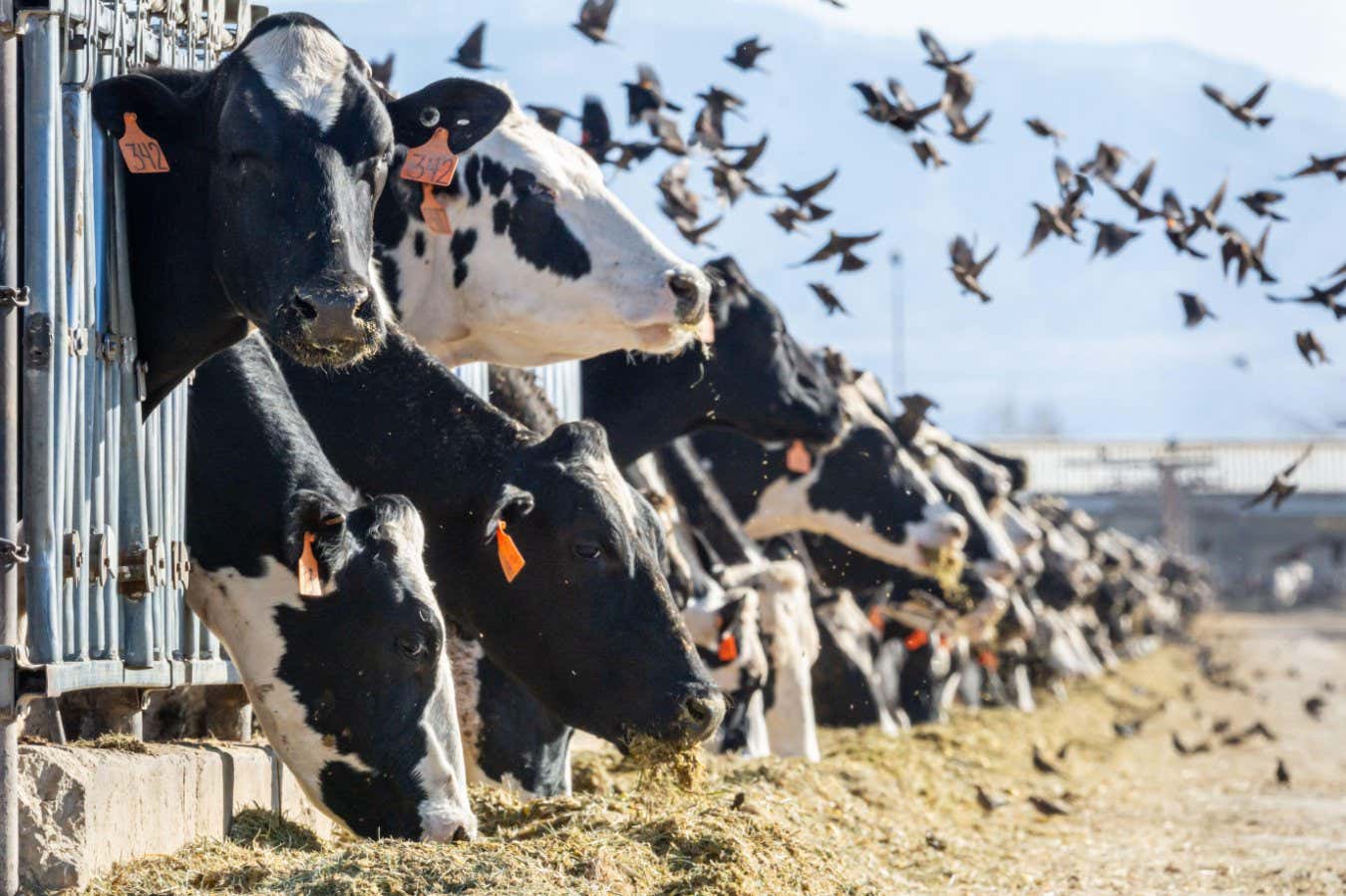Amidst an ongoing outbreak of a deadly bird flu virus in livestock, the US Department of Agriculture is doing more to prevent the spread than public health agencies are
By Grace Wade
13 June 2025
A dangerous strain of bird flu is spreading in US livestock
MediaMedium/Alamy
Since Donald Trump assumed office in January, the leading US public health agency has pulled back preparations for a potential bird flu pandemic. But as it steps back, another government agency is stepping up.
Read more
mRNA cancer therapy now in human trials after shrinking mouse tumours
While the US Department of Health and Human Services (HHS) previously held regular briefings on its efforts to prevent a wider outbreak of a deadly bird flu virus called H5N1 in people, it largely stopped once Trump took office. It has also cancelled funding for a vaccine that would have targeted the virus. In contrast, the US Department of Agriculture (USDA) has escalated its fight against H5N1’s spread in poultry flocks and dairy herds, including by funding the development of livestock vaccines.
This particular virus – a strain of avian influenza called H5N1 – poses a significant threat to humans, having killed about half of the roughly 1000 people worldwide who tested positive for it since 2003. While the pathogen spreads rapidly in birds, it is poorly adapted to infecting humans and isn’t known to transmit between people. But that could change if it acquires mutations that allow it to spread more easily among mammals – a risk that increases with each mammalian infection.
The possibility of H5N1 evolving to become more dangerous to people has grown significantly since March 2024, when the virus jumped from migratory birds to dairy cows in Texas. More than 1,070 herds across 17 states have been affected since then.
H5N1 also infects poultry, placing the virus in closer proximity to people. Since 2022, nearly 175 million domestic birds have been culled in the US due to H5N1, and almost all of the 71 people who have tested positive for it had direct contact with livestock.
